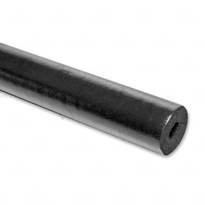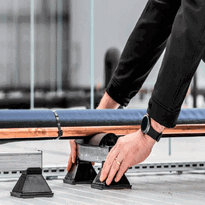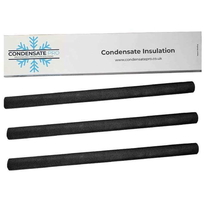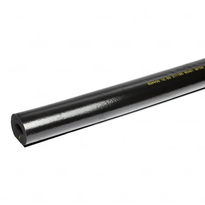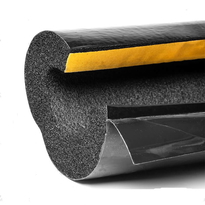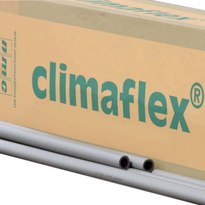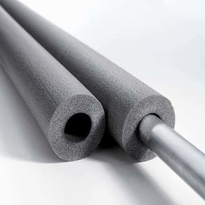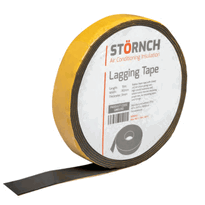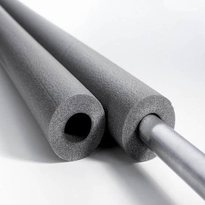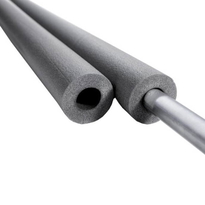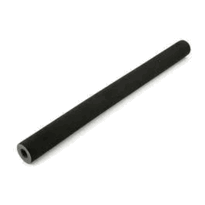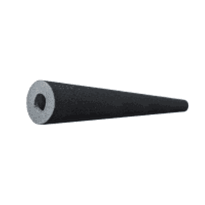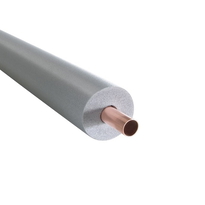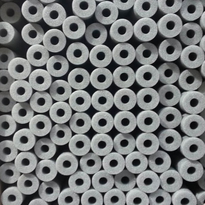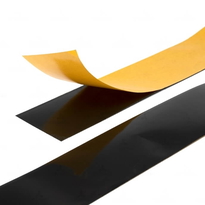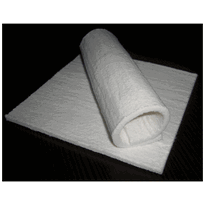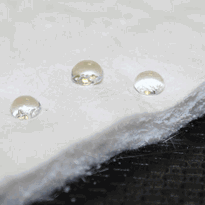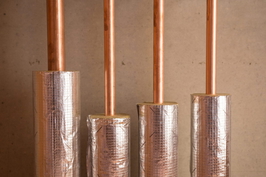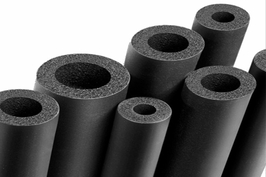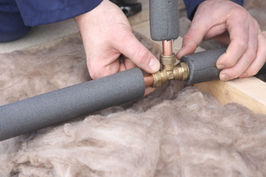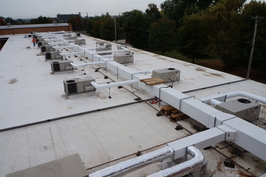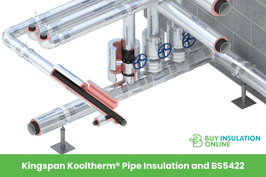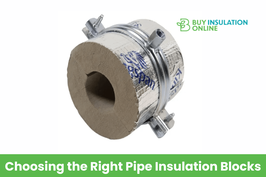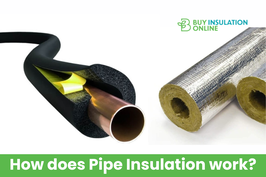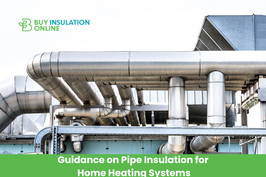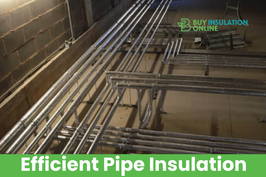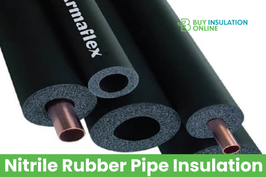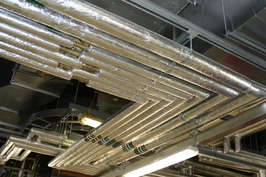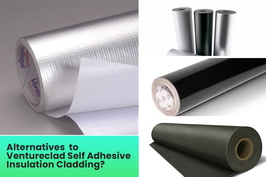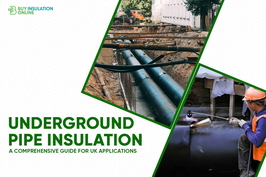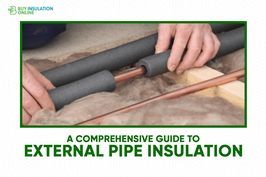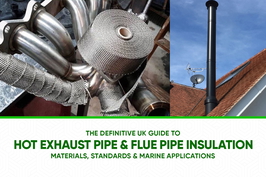External Copper Pipe Insulation
External copper pipe insulation employs materials such as elastomeric foam or polyethylene to minimize heat transfer, prevent condensation, and protect pipes from environmental damage. These insulations enhance energy efficiency and offer safeguarding against moisture, UV rays, and temperature fluctuations, particularly in outdoor or exposed environments.
Proper installation involves several key steps. Firstly, pipes should be thoroughly cleaned to remove dirt, grease, and any debris. Accurate measurement of the pipe length is essential to ensure the insulation fits snugly without gaps. When fitting around fittings, valves, or bends, the insulation must be carefully carved or cut to accommodate these features. Seams and joints should be sealed securely using appropriate adhesive or tape to prevent heat loss and moisture ingress.
Optimizing the performance of external copper pipe insulation not only prolongs the lifespan of the pipes but also ensures efficient thermal management and protection against environmental elements. Regular inspections and maintenance can help identify and rectify any wear or damage, maintaining insulation effectiveness over time.
Types of Insulation Materials for Copper Pipes
There are several types of insulation materials available for copper pipes, each designed to meet specific performance requirements and environmental conditions. Elastomeric foam insulation, often made from synthetic rubber such as EPDM, offers high flexibility and excellent resistance to moisture, vapor, and mold, making it suitable for outdoor or damp environments. It provides effective thermal insulation over a wide temperature range, from -73°C to 104°C, and is easy to install using tubular forms with self-sealing adhesives or slip-on designs. EPDM elastomeric foam is particularly valued for its durability and ability to withstand UV exposure and temperature fluctuations, which enhances its suitability for outdoor applications. Additionally, the thermal resistance of elastomeric foam helps prevent heat loss and condensation, protecting the pipes effectively. Polyethylene foam insulation is lightweight, flexible, and typically used for colder or ambient temperature piping. It offers good moisture resistance and chemical protection, ensuring copper pipes remain insulated efficiently regardless of external conditions. These materials support both performance and longevity, helping to prevent heat loss and protect against condensation in various settings.
Benefits of Insulating External Copper Pipes
Insulating external copper pipes provides a variety of important benefits that enhance the efficiency, durability, and safety of plumbing and HVAC systems.
By reducing heat transfer, insulation helps maintain consistent temperatures within pipes, leading to lower energy consumption and reduced utility bills. This improved system efficiency is particularly evident in hot water lines, which retain heat more effectively, and chilled lines, which minimize unwanted heat gain from the environment.
In addition, insulating copper pipes offers protection against environmental factors such as ultraviolet (UV) rays, moisture, and extreme temperature fluctuations. This shielding reduces the risk of corrosion and physical damage, prolonging the lifespan of the piping system. Corrosion resistance enhances durability and safety over time.
Insulation also assists in preventing condensation from forming on cold pipes, which can otherwise cause damage to surrounding materials and promote mold growth. The insulation acts as a barrier that prevents moisture from reaching the cold surface of the pipes.
Furthermore, in colder climates, insulation plays a vital role in preventing pipes from freezing, thereby avoiding costly repairs and service disruptions. It supports steady system performance by minimizing temperature fluctuations, which can lead to inefficient operation or strain on the system.
Insulated pipes also help reduce noise transmission and minimize wear and tear over time, contributing to quieter, smoother functioning.
Installation Practices and Considerations
Ensuring proper installation of external copper pipe insulation requires careful attention to surface preparation, accurate measurement, and secure application methods.
First, pipes should be thoroughly cleaned with a damp cloth to remove dust, dirt, and debris, ensuring effective adhesion. The surface must be completely dry to prevent moisture trapping, which could lead to corrosion or mold growth. Proper cleaning is critical to maintaining the longevity of the insulation and preventing issues over time. Applying a vapour barrier or sealant around fittings can further reduce moisture ingress and improve overall durability.
Inspect the pipes for leaks or damage and carry out any necessary repairs beforehand.
When measuring the insulation, use a sharp utility knife to cut it accurately, creating clean, straight edges for a snug fit around the pipes.
Fit the insulation tightly, carefully carving around fittings such as elbows and tees to ensure a continuous envelope.
Secure the insulation using suitable tape, ties, or clamps every 1-2 meters, depending on the pipe length and insulation material.
Seal all seams with appropriate tape or adhesive to prevent gaps, maintaining insulation efficiency and providing protection against environmental factors.
Proper sealing and fastening are essential to prevent movement, minimize heat loss, and extend the lifespan of the insulation system. Incorporating proper installation practices ensures optimal performance and increased longevity of the insulation system.
Conclusion
Proper insulation of external copper pipes enhances energy efficiency, reduces heat loss, and safeguards against freezing conditions. Selecting suitable insulation materials that are tailored to specific environmental settings, coupled with correct installation techniques, ensures optimum performance and longevity. Complying with industry standards and adhering to manufacturer guidelines are vital for effective and durable insulation. Overall, a comprehensive understanding, careful material selection, and meticulous application are essential for maintaining the integrity and functionality of copper piping systems across various British environments.
